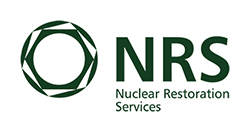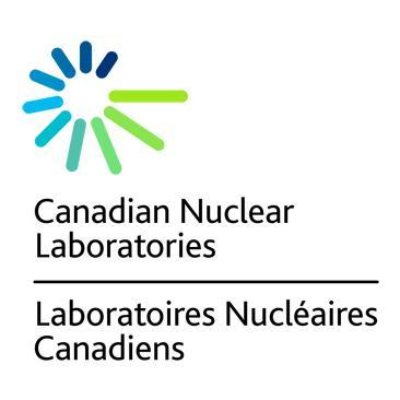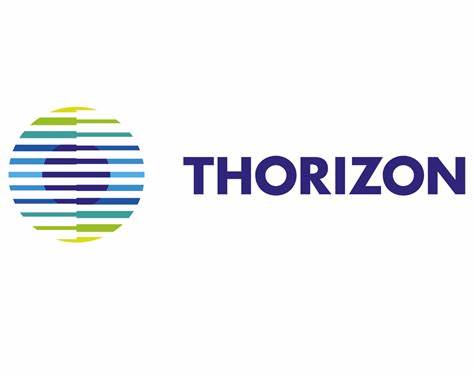Part 2 of 2 Parts (Please read Part 1 first)
EDF said its goal is to help restore U.K. nuclear output back above sixty terawatts per annum by replacing the existing AGR fleet capacity through the installation of new EPRs at Hinkley Point C and Sizewell C and extending Sizewell B out to 2055.
EDF added, “Beyond this major commitment, we will continue to support government and industry with any plans to deliver a fleet of small modular reactors (SMRs), further large-scale nuclear at Wylfa and elsewhere and investment in advanced technologies. In line with the U.K. government strategy, EDF has continued to explore options for the long-term future of our sites. We are open in terms of which designs are taken forward at our sites and look forward to the government’s revised nuclear roadmap and further direction on which technologies should be developed on which sites as part of a holistic UK new build program.”
At the same time as EDF Energy released its annual nuclear fleet update, a new report was published by independent consultants Economic Insight highlighting the significant contribution that nuclear energy has made to economic growth in the U.K. over the last fifty years.
The new report was commissioned by EDF. It shows that the current fleet of eight nuclear power plants have so far contributed more than one hundred fifty-three billion dollars to the U.K. economy since the two oldest plants started operating in 1976.
The report said that the fleet supported thirty thousand jobs each year when all eight plants were generating. Five thousand of those jobs have been directly with EDF. The majority of the jobs came through supply chain and other induced impacts, like hospitality businesses supported by local wages. That means that there was an average of five point three additional jobs in the U.K. economy for every EDF job.
The positive impact on the U.K. supply chain is also highlighted with a finding that more than ninety percent of supply chain spending is made domestically, with around fifteen hundred U.K.-based companies.
The report also employed a new methodology for calculating the carbon the nuclear plants have prevented from entering the atmosphere. Instead of comparing the nuclear output with gas generation alone, the report examines the historical energy mix, when coal was the prevailing fuel. This reveals that the two thousand one hundred and twenty-six terawatts of electricity the nuclear fleet has generated has prevented the emission of one billion tons of carbon, the equivalent to sixty years of U.K. car emissions.
Mark Hartley is the Managing Director of EDF’s Nuclear Operations business. He said, “Nuclear power stations do not just produce zero-carbon electricity, they have supported tens of thousands of livelihoods for decades. This is the first time the economic impact of the operating phase of the fleet has been analyzed in this way. Seeing how the combined value of the power, jobs and supply chain spend adds up over time really helps to throw into sharp relief the positive impact that these facilities have on economic growth. The investment made in these stations over nearly fifty years has paid dividends, and will continue to do so, not just for the people working and living close to the stations but also the millions who benefit from the zero-carbon electricity they produce.”
Électricité de France
Category: Nuclear Reactors
-

Nuclear Reactors 1474 – EDF Is Managing The U.K. Fleet of Commercial Nuclear Power Reactors – Part 2 of 2 Parts
-

Nuclear Reactors 1473 – EDF Is Managing The U.K. Fleet of Commercial Nuclear Power Reactors – Part 1 of 2 Parts
Part 1 of 2 Parts
EDF Energy said the performance of its U.K. nuclear power plants in 2024 was “very good”, with an output of thirty-seven terawatts. It intends to maintain the same level over the coming years. Meanwhile, a new report has highlighted the contribution that nuclear energy has made to economic growth in the UK.
EDF manages eight U.K. nuclear power plant sites. Five of them are currently operating (Sizewell B, Torness, Heysham 2, Heysham 1 and Hartlepool) and three have entered decommissioning (Hunterston B, Hinkley Point B and Dungeness B). It took over the nuclear power plants sites when it acquired British Energy in 2009. The company is also constructing the new Hinkley Point C plant in Somerset as well as advanced plans for a replica of Hinkley Point C at Sizewell C in Suffolk.
EDF Energy said, “U.K. nuclear output in 2024 totaled thirty-seven terawatts – the same as 2023 – and nearly four times more than was anticipated for 2024 at the point of acquisition in 2009. The U.K. imported twenty-one terawatts from France in 2024, the majority of which will have been generated by French nuclear reactors. The objective is to sustain output at around this level into 2027 and longer, if possible.”
EDF noted it has invested about ten billion dollars in the U.K. fleet since it acquired it in 2009 and will invest a further one billion sixty-two million dollars over the next three years (2025-27) “to help sustain current levels of generation, boost energy security and cut carbon.”
EDF continued, “While output has dropped from a high point in 2016 of sixty-five terawatts from eight power stations, the fleet still plays an integral part in supporting U.K. energy security. This is especially true when demand is high and renewables output is low due to weather conditions.”
EDF Energy said it has set itself a number of priorities over the next ten years.
EDF said that the Sizewell B pressurized water reactor in Suffolk, which started operations in 1995, provides three percent of the U.K.’s electricity demand, “making it important for energy security and the UK’s clean power goals”. EDF said it will invest to enable a potential twenty-year operating extension, taking the lifetime from 2035 to 2055. “This decision is subject to agreeing the appropriate commercial model to ensure such an extension is viable.”
Last December, further short life extensions for the four generating Advanced Gas Cooled Reactor (AGR) plants were announced. Heysham 1 and Hartlepool will generate until 2027, and Heysham 2 and Torness would have their lifetimes extended by two years to 2030. EDF said it wants to generate beyond these dates, subject to plant inspections and regulatory oversight.
An agreement to remove the fuel from all seven AGR plants was reached in June 2021. Once the spent nuclear fuel has been removed, each plant will be transferred to Nuclear Restoration Services (NRS), part of the Nuclear Decommissioning Authority (NDA). There are three nuclear power plants currently in defueling (Hunterston B, Hinkley Point B and Dungeness B). EDF said its target is to make this transfer approximately nine to twelve months after each power plant is declared as ‘fuel free’. The first plant due to transfer will be Hunterston B in mid-2026. The rest of the nuclear fleet is due to transfer on a rolling basis in the years that follow. This is dependent on actual end of generation dates and overall defueling performance at each station and at Sellafield.
Nuclear Restoration Services
Please read Part 2 next -

Nuclear Reactors 1472 – Australian Political Parties Disagree About The Need For Nuclear Power – Part 2 of 2 Parts
Part 2 of 2 Parts (Please read Part 1 first)
Other Australians at COP29 say it is important not to overstate nuclear’s presence, and its place in the global net-zero carbon effort.
Tennant Reed is the Director of Climate Change and Energy at the Ai Group, and he is a veteran of COP climate summits. He said the arrival of nuclear energy in the climate change scene had certainly been noticeable.
Reed added, “When I was at the 2018 climate summit in Poland, there was something of a fuss and surprise when a person in a giant inflatable polar bear costume burst into the cafeteria, accompanied by pro-nuclear youth and an opera singer singing pro-nuclear songs. That was very unusual but there’s a lot more visibility for the nuclear power industry, and nuclear advocates, in the trade show element of these conferences these days.” He continued that growth in nuclear power wasn’t a feature of the main negotiations at Baku, but neither was scaling up any other particular energy source.”
Reed went on to say that nuclear advocates were hosting events on the sidelines, and they were very sensitive to one criticism in particular. He said, “They’re all conscious that they have to show that they can deliver new projects ‘on time and on budget’. I must have heard that phrase fifty times from nuclear people.”
Reed added, “I think that they’re conscious that this is an ambition that the last wave of nuclear development in Western countries certainly did not meet. But they are very focused on making sure that this time is different.”
The IAEA is forecasting a few big decades for nuclear power, expecting global production to more than double by 2050. However, Reed said much of the growth in nuclear power was coming from countries with established industries. While other countries were expressing interest in setting up an industry, few had recently broken ground. He said there was a much more momentum in the roll-out of renewables. He added that “Wind and solar deployment, and especially solar at the moment, is taking off like a rocket. It took the world a very long time to deploy its first total terawatt of solar energy production. We are now doubling every couple of years. And so there’s a vast amount of on-the-ground deployment of wind and solar that is happening.”
Some conservation groups have tried to push back on the rising prominence of nuclear power, seeing it as a threatening distraction in efforts to combat climate change. The Australian Conservation Foundation’s (ACF) Dave Sweeney attended the COP29 conference in Baku. He cast some doubt on nuclear’s future, at least compared to renewables. Sweeney said, “It’s one thing to have agreements and aspirations, it’s another to have projects and power. The industry is having some very good rhetoric, but it’s having a very poor reality. We’ve seen thirty countries say that they will triple nuclear (power) by 2050; we’ve seen one hundred and twenty-five say that they will triple renewables by 2045.”
Sweeney argues that part of the nuclear industry’s ambition is attracting public funding, in an effort to “de-risk” its projects. He added, “At meeting after meeting, they’ve spoken about the need for market reforms to de-risk nuclear projects. I think that is very bold code for ‘no-one wants to fund us, so we’re looking for the public purse’.” -

Nuclear Reactors 1471 – Australian Political Parties Disagree About The Need For Nuclear Power – Part 1 of 2 Parts
Part 1 of 2 Parts
Nuclear’s share as part of the global energy mix has been falling for the past few decades, and incidents like the Fukushima disaster in 2011 highlighted for many the risks of the technology. Some countries started mothballing or shutting down nuclear power plants, and many new projects have been plagued by cost overruns and construction delays. However, in the past few years there has been a remarkable turnaround.
Countries are pledging to triple the production of nuclear power globally. Industry advocates are a growing presence at global climate summits. The International Atomic Energy Agency (IAEA) is a United Nations body that advocates for peaceful use of nuclear technology. It is forecasting substantial growth in the nuclear power sector over the coming decades.
Australia is heading into a federal election with the adoption of nuclear power at the center of the political contest. The Liberal-National Coalition (LNP) argues that Australia risks being left behind if it doesn’t get on board with nuclear power.
Others point out that while there is plenty of global interest in nuclear power and the as-yet unrealized promise of new technology such as small modular reactors (SMRs), there is a lot more money flowing into renewable energy sources, which are already transforming global energy grids.
The U.N. Climate Change Conference (COP29) climate summit held in Baku, Azerbaijan late last year was dedicated to climate financing. It was focused on finding the money needed to fund a massive global effort to tackle climate change.
COP29 made headlines for a few different reasons. One reason was that for the second year running, the global climate summit was being held in a country that derives most of its income from oil and gas. Last year’s climate summit was held in the UAE.
Another reason was the growing presence of nuclear power. Six more countries have signed a pledge to triple nuclear’s global production by 2050, taking the total number of countries on board to thirty-one.
These countries range from relatively small countries such as Moldova, to major Australian allies like Canada, Japan, the UK and US. All four of those larger countries have long-established nuclear power industries.
Nuclear power attracted plenty of attention at COP29, including headlines labelling it a “rising star” at the climate summit.
David Gillespie is the retiring Nationalist Party (NP) MP for the NSW North Coast seat of Lyne. He travelled to the summit (with some backing from Coalition-aligned environment group Coalition for Conservation). Gillespie has been one of nuclear power’s longest and loudest supporters in Australia, chairing the “parliamentary friends of nuclear industries”. He acknowledges that a large part of COP29 was devoted to renewable energy, and a lot of money and ambition is flowing into solar and wind. However, he said that the shift in thinking on nuclear power at a global scale was clear to see.
Gillespie said, “The world — and climate summits — for the first twenty-five years ignored nuclear. People have worked out, they realize for us to reduce our world’s requirement for fossil fuels, for industry, for running cities, for running sovereign energy systems that are not weather dependent — the way to go is nuclear. You build a fleet (of power plants), you don’t tip your toe around the edges.” He said the message he took from the climate summit was go nuclear, and go big. You do what France, and what Canada, and what America did in the 80s, you build a lot of them. And then you’ve got a grid that’s resilient and clean.”Please read Part 2 next -

Nuclear Reactors 1470 – Chinese DeepSeek Chatbot Roils Stock Market For Chip Makers And Nuclear Industry
S&P 500 nuclear power giants Constellation Energy (CEG) and Vistra (VST) stock plummeted Monday as China’s private DeepSeek startup shook the global markets. DeepSeek has just released a powerful artificial intelligence program that it claims costs just five billion six hundred million dollars to build. This marks a possible paradigm shift from the current massive levels of investment by technology industry giants in energy and AI infrastructure.
Nuclear stocks fell Monday during market action, marking a reverse of fortunes compared to last week. The sector had advanced after President Trump announced Tuesday afternoon that Sam Altman’s OpenAI, SoftBank and Oracle (ORCL) are planning a joint venture called Stargate. This collaboration is intended to build data centers and other AI infrastructure in the U.S., with investments of up to five hundred billion dollars.
Data centers are needed to “train” AI learning models. They are expected to increase demand for electricity through the coming decade. Big Tech companies have looked to nuclear power, as well as natural gas, to answer the demand surge. However, the concern about China’s DeepSeek is that the massive investment is not necessarily needed for a capable AI model.S&P 500 companies CEG and VST sank twenty two percent and twenty eight percent respectively on Monday. These nuclear giants, who were two of the top three S&P 500 performers in January going into Monday’s trade, had jumped more than nine percent last week. CEG and VST began Monday trade extended above traditional buy points, according to MarketSurge chart analysis.
Along with CEG and VST, Talen Energy (TLN) sank twenty-two percent. Talen Energy signed a six hundred and fifty million dollars deal last March with Amazon.com (AMZN) for a nuclear-powered data center campus.
Meanwhile, small modular reactor (SMR) focused companies signaled significant declines after huge gains last week. The nuclear industry segment so far has offered no operational advanced nuclear projects. However, several companies are moving ahead with SMR technology.
Oklo (OKLO) is the nuclear power startup backed by Sam Altman from OpenAI. It slid twenty-six percent on Monday. OKLO stock soared sixty percent last week, surging past a traditional twenty-eight buy point, the high from October 30th, from a nine-week cup base. The stock began Monday up nearly ninety percent in January. However, the OKLO stock is very volatile and has swung above and below that twenty-eight entry in broad moves.Fellow SMR-focused stock Nano Nuclear Energy (NNE) dropped twenty six percent on Monday after an eighty percent advance last week. NuScale Power (SMR) dipped twenty eight percent on Monday. That stock booked a twenty-seven percent gain last week.
GE Vernova (GEV) has been experiencing demand for its natural gas turbines for data centers. It declined around twenty-two percent on Monday.
Meanwhile, Entergy (ETR), one of the largest U.S. utilities, dipped four and a half percent on Monday. Last December, Entergy was chosen by Meta Platforms (META) to help power its planned ten-billion-dollar AI data center in northeast Louisiana.
AI data center-adjacent stocks also dropped on Monday. Powell Industries (POWL) fell sixteen percent while Modine Manufacturing (MOD) declined twenty six percent. Comfort Systems USA (FIX) sank twenty-five percent and Vertiv Holdings (VRT) fell around thirty percent.
Constellation Energy stock has a ninety-four Composite Rating out of a best-possible ninety-nine. The S&P 500 stock also has a ninety-seven Relative Strength Rating and a fifty-four EPS Rating. -

Nuclear Reactors 1469 – TerraPower Moving Forward With First Advanced Reactor In US
TerraPower is the nuclear energy company founded by former Microsoft CEO and co-founder Bill Gates. It just announced that it has a memorandum of understanding (MoU) with a major U.S. data center developer to deploy advanced nuclear reactors to power existing and future facilities.
On January 21st, TerraPower said it will collaborate with Sabey Data Centers (SDC) on “a strategic collaboration agreement to leverage advanced nuclear Natrium plants into SDC’s current and future data center operations.” Last year, TerraPower broke ground on the first U.S. advanced nuclear project, located near PacifiCorp’s Naughton Power Plant in Wyoming. The Naughton plant will stop burning coal in 2026. It will stop its use of natural gas within the next decade. In a press release, TerraPower said the venture will explore building new Natrium plants in the Rocky Mountain region, and Texas, “to support growing power needs for SDC-owned data centers.”
Bill Gates told the audience at last year’s groundbreaking in Wyoming that they were “standing on what will soon be the bedrock of America’s energy future … this is a big step toward safe, abundant, zero-carbon energy, and it’s important for the future of this country that projects like this succeed.”
Chris Levesque is TerraPower president and CEO. He said, “At its heart, TerraPower is an innovation-driven company, and we are thrilled to collaborate with Sabey to address the surging energy demands of data centers with clean, reliable and adaptable solutions like the Natrium technology. The energy sector is transforming at an unprecedented pace after decades of business as usual, and meaningful progress will require strategic collaboration across industries. Together, we can ensure advanced nuclear technology plays a vital role in securing a clean, resilient energy grid.”
The two companies said that they “will explore multiple project execution structures to meet the exponential demand in data center energy needs with TerraPower’s innovative advanced nuclear + storage Natrium technology.”
The Natrium system features a three hundred forty-five-megawatt reactor and can be optimized for specific markets. Its innovative thermal storage has the potential to boost the system’s output to five hundred megawatts of power for more than five and a half hours when needed.
Several technology companies are looking at nuclear power as a viable option to provide electricity for their energy-intensive date centers operations. Microsoft signed a deal last September to help restart a retired reactor at Three Mile Island. Google and Amazon have also announced plans to aid the development of advanced reactors to power their data centers.
Tim Mirick is the president of SDC. He said, “Sabey Data Centers is dedicated to pioneering sustainable energy solutions to support our customers’ growth. Our strategic collaboration with TerraPower represents a substantial move toward integrating clean, innovative power technologies into the heart of our operations.”
Jeffrey Kanne is the vice chairman of SDC and president and CEO of National Real Estate Advisors. He said, “This strategic relationship exemplifies the forward-thinking collaboration necessary to meet the evolving energy demands of our digital future.”
Nuclear industry experts have said the rise of artificial intelligence and data centers is projected to increase U.S. electricity demand by three hundred and twenty-three terawatts by 2030. -

Nuclear Reactors 1468 – Canada Exploring The Commercialization Of Small Nuclear Reactor Designs
Nuclear laboratories in Canada are interested in exploring the commercialization of small reactor designs. A Request for Expression of Interest (RFEOI) has been issued to test the market interest in licensing Atomic Energy of Canada Limited’s (AECL) SLOWPOKE and Nuclear Battery reactor technologies for commercialization.
AECL’s SLOWPOKE (Safe Low-Power ‘Kritical’ Experiment) technology is a family of low-pressure, pool-type reactors. The family includes the SLOWPOKE-2, which is a small, simple, inexpensive, and inherently safe reactor design that has seen years of operations experience and has been successfully licensed and operated safely in Canada for decades.
Nuclear technology developers and other interested stakeholders have been invited to share their insights and feedback about the innovative reactor designs and technologies with the latest RFEOI.
Lou Riccoboni is the Canadian Nuclear Laboratories (CNL) Vice-President of Corporate Affairs and Business Development. He stated that the company’s program of work includes the small modular reactor (SMR) siting program and Canadian Nuclear Research Initiative (CNRI). CNL has leveraged its resources to help develop and deploy the next generation of nuclear reactors in Canada.Riccoboni added, “With that goal in mind, we see real opportunity and value in AECL’s SLOWPOKE and Nuclear Battery designs, which have tremendous potential to help combat climate change, and to advance research in physics and health sciences.”
He emphasized that this RFEOI process allows CNL to engage technology developers to determine whether there is serious commercial interest in exploiting these innovative designs. This would help advance these important causes while making the most of AECL’s Intellectual Property on behalf of Canadian taxpayers.
CNL’s Nuclear Battery technology is a solid-state micro-reactor concept that would be able to produce a combination of electricity (up to six hundred kilowatts) and heat (up to twenty-four hundred kilowatts at about four hundred °C) for up to fifteen years without the need for refueling. It could also survive all postulated accident scenarios without human intervention, according to AECL. The Nuclear Battery has never advanced to construction.
CNL has also claimed that the AECL Nuclear Battery is appropriate for off-grid applications. The Nuclear Battery concept, largely envisioned for electricity or industrial heat processes, was developed and advanced by AECL in the 1980s and 90s.
Initial research indicates that both SLOWPOKE and the Nuclear Battery may have broad appeal to the international nuclear technology development community. AECL and CNL are currently interested in learning more about market interest in these technologies which include reactor design, engineering and sales, as well as end-use applications, such as district heating, electrical generation, isotope production and neutron activation analysis, according to a press release.
The AECL maintains that a major benefit of the SLOWPOKE family of reactors is their ‘safe by physics’ design, which simplifies operations and licensing, and allows unattended operation for up to 24 hours.
These reactors have been utilized safely for about five decades in Canada and Jamaica, on university campuses and government installations. Their applications include neutron activation analysis, neutron radiography, and education. The success of small SLOWPOKE research reactors has motivated research into the potential for larger versions of the concept, which could be used for district heating, as per the press release. -

Nuclear Reactors 1467 – Virginia Considering Where To Build Small Modular Reactors – Part 2 of 2 Parts
Part 2 of 2 Parts (Please read Part 1 first)
Wise County was one of the areas being considered for siting a small modular nuclear reactor after Virginia Governor Glenn Youngkin announced in October of 2022 that he wanted to deploy the nation’s first SMR in the coalfields region of the state. This region was devastated by the ongoing downturn in the coal industry.
SMRs are smaller, simpler versions of traditional fission nuclear reactors that can be built in a factory and shipped to a site for installation. They produce about one third of the power of currently operating full-sized nuclear fission reactors.
In March of 2024, Youngkin said that he felt that other sites would be a better fit for the siting of the first SMR. He added that multiple SMRs will eventually be deployed across the state and Southwest Virginia might still get one.
Dominion Energy is the state’s largest utility. In July of 2024, it announced plans to construct the country’s first SMR in the 2030s at its North Anna plant. This plant is already licensed for a third conventional reactor.
LENOWISCO has already conducted two studies regarding SMRs, one a feasibility study and the other examining the supply chain. GO Virginia was one of the funders for this research. Asked if those studies would pertain to the microreactor, Miller said that that is a “completely different animal.”
The grant for the microreactor study must now be approved by the Virginia Department of Housing and Community Development. The grant will need to be matched by an additional fifty thousand dollars.
The region’s legislators, economic development officials and some local government leaders wanted to site an SMR in the area because of the growth and jobs it was expected to bring. There was also public opposition, particularly from environmental groups that claimed that the public was left out of the process and worried that the technology was new and not proven.
Wally Smith is the vice president of The Clinch Coalition, which is an environmental group. The group claimed Tuesday that there was a lack of opportunities for public feedback with respect to the sites included in the 2023 LENOWISCO SMR feasibility study that resulted in “confusion and distrust” in Southwest Virginia. He added that he hopes that local officials “learned lessons from that debacle” and will involve local residents in planning for the region’s energy future.
Smith said “In particular, GO Virginia Region One could step up to the plate and make an inclusive and intentional public listening component a condition of funding this recently proposed microreactor feasibility study. That would go a long way towards restoring the public’s trust in that organization’s ability to grow the local economy not just to benefit political and industry VIPs but to improve the lives of local families.”
GO Virginia Region 1 includes the cities of Bristol, Galax and Norton, as well as the counties of Bland, Buchanan, Carroll, Dickenson, Grayson, Lee, Russell, Scott, Smyth, Tazewell, Washington, Wise and Wythe. -

Nuclear Reactors 1466 – Virginia Considering Where To Build Small Modular Reactors – Part 1 of 2 Parts
Part 1 of 2 Parts
Months ago, it was revealed that the state’s first small modular nuclear reactor would not be built in Southwest Virginia. Local officials are now pushing for a study on the feasibility of placing a smaller nuclear generator, a microreactor, in Wise County, Virginia.
On Tuesday, a one hundred-thousand-dollar grant that would fund such a study was approved by the GO Virginia Region 1 Council which is an economic development initiative that covers Southwest Virginia.
Microreactors are compact nuclear reactors that are small enough to be transported by truck. Most of the designs would produce up to twenty megawatts of thermal energy that could be utilized directly as heat or converted to electric power, according to the U.S. Department of Energy’s Office of Nuclear Energy. A small modular nuclear reactor, or SMR, ranges from fifty to three hundred megawatts.
Currently, there are no microreactors operating in the U.S. Russia has several operating microreactors, according to the Idaho National Laboratory (INL), one of seventeen national labs in the U.S. Department of Energy
The INL says on its website that new microreactor designs equipped with advanced technologies are being developed by several organizations and companies. Demonstrations of these new microreactors are expected to be held within the next seven years.
Duane Miller is the executive director of the LENOWISCO Planning District Commission. He told the GO Virginia council last Tuesday that microreactor technology has been used in submarines and aircraft carriers for the last seventy years.
LENOWISCO is currently assisting the county in its effort because the project could be significant to the region, according to Miller. He went on to say that the broader region of interest for the project is Lee, Wise, Scott and Dickenson counties and the city of Norton.
After the GO Virginia meeting, Miller claimed that microreactors could provide a stable and consistent power supply to rural areas like Southwest Virginia. This would reduce dependence on “intermittent” sources such as solar or wind power while acting as a recruitment tool for economic sectors that use a lot of energy.
Miller added that “It is our hope that when completed, this project funded by GO Virginia will assist the region on the best path to move forward.” Microreactors can be designed to assist with powering critical infrastructure like hospitals, universities and water treatment facilities, he said. This would ensure that these services remain operational in rural areas.
The proposed study would identify and analyze a prospective site for a microreactor and the infrastructure that would be required, according to the grant application. It would also detail the baseload power capabilities and help identify customers such as data centers, the application states.
Mike Hatfield is the Wise County’s administrator. He said that his county is interested in the possibility of a microreactor because it “wants to remain an energy leader for Virginia.” The county is reviewing all current forms of energy generation including gas, solar, wind, hydrogen and nuclear, according to Hatfield. He went on to say that the county would likely use a microreactor to provide energy to locations that can’t get efficient energy from the local power grid, such as a data center.Please read Part 2 next
-

Nuclear Reactors 1465 – A Dutch Consortium Of Nuclear Companies Are Collaborating On Small Modular Reactors And Molten Salt Reactors
A Dutch consortium of technology companies including Demcon, Thorizon and VDL Group have signed a project agreement to demonstrate and validate the manufacturability, safety, and functionality of critical components and non-nuclear (sub)systems of molten salt reactors (MSR).
The collaboration between Demcon, Thorizon and VDL Group was formalized in October of 2024 during a visit by Climate and Green Growth Minister Sophie Hermans to the Dutch Institute for Fundamental Energy Research (DIFFER), a leading research institute in Eindhoven. During her visit, the consortium partners, along with DIFFER, signed a letter of intent to facilitate small modular reactor (SMR) technology development in the Netherlands. A project agreement between the partners was signed in December of 2024. The consortium aims to establish an advanced testing facility where molten salt reactor technologies can be developed and tested.
In early December of last year, the consortium reached a major milestone by submitting a grant application to the Province of Noord-Brabant. Thorizon said that this application highlights the commitment of the involved parties to foster innovation and sustainable development in the region.
In 2021, Noord-Brabant launched the innovation coalition ‘Nuclear Energy for the Future’ with the goal of leveraging the manufacturing industry and research institutes in the province to accelerate the development of MSRs.
Thorizon said, “Participating in this project will not only provide companies with valuable experience but also help them attain the qualifications needed to become part of the supply chain for SMRs and large-scale reactors planned in the Netherlands. This strengthens the competitiveness of the Dutch manufacturing sector, creates new jobs, and fosters innovation. The project aims to deliver several component prototypes and a test facility in Noord-Brabant within two and a half years.”
Kiki Lauwers is the CEO of Thorizon. She said, “For Thorizon, this is a unique opportunity. Companies like VDL and Demcon have unparalleled experience in realizing high-tech projects, from concept to prototype and serial production. During our collaboration with DIFFER, we have seen that Brabant offers world-class knowledge and facilities and can act quickly. With these partners, we share an ambitious and pragmatic mindset that is crucial for our development and successful collaboration.”
Thorizon is a spin-off from NRG Pallas, which operates the High Flux Reactor in Petten. It is developing a one-hundred megawatt MSR which is targeted at large industrial customers and utilities. The company plans to begin building its first reactor, Thorizon One, around 2030.
Thorizon currently collaborates with nuclear industry leaders such as Orano, Tractebel and EDF, and its project has been selected by the European Commission and the French government under the France 2030 investment plan.
MSRs use molten fluoride salts at low pressure as primary coolant. They may operate with fast neutron spectrums, and with a variety of fuels (A fast neutron spectrum is characterized by neutrons carrying energies above one million electron volts.) Much of the interest today in reviving the MSR concept relates to using thorium (to breed fissile uranium-233). An initial source of fissile material such as plutonium-239 needs to be provided.
The DIFFER research institute conducts leading-edge research on fusion energy and chemical energy. It supports the development of MSRs through its unique DICE (DIFFER Irradiation-Corrosion Experiment) research facility. DICE is used to optimize material choices taking into account the interaction between corrosion, heat, and radiation.
